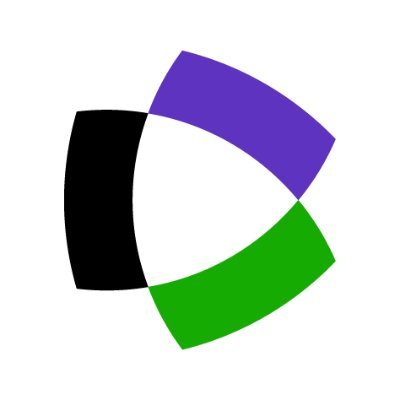
Journals hoping that Clarivate Analytics — the company behind the Impact Factor — would reverse their decision to suppress their titles from the closely watched metric are batting .500.
In July, as we reported, Clarivate suppressed 33 journals from its Journal Citation Reports (JCR), which means they will not have a 2019 Impact Factor, because of what Clarivate said was excessive self-citation. As affected journals have noted, suppression from the list can have a major impact on journals and researchers, many of whom are judged based on where they publish, using Impact Factor as a key metric.
Two journals — Zootaxa and the International Journal of Systematic and Evolutionary Microbiology — successfully appealed the decision, and have been reinstated in the 2019 JCR. But appeals by two others — Body Image and Forensic Science International: Genetics (FSIGEN) — have been denied, Retraction Watch has learned.
Between August 18 and August 26, nearly 500 forensic scientists from 49 countries signed a petition objecting to Clarivate’s move, according to Ulises Toscanini, director of the Laboratory PRICAI-Fundación Favaloro and a professor at Favaloro University in Buenos Aires. Toscanini, president of the executive committee of the Spanish and Portuguese Speaking Working Group of the International Society for Forensic Genetics, said FSIGEN “is a ‘niche’ journal,” and is “broadly recognized as the top journal of the area.” He continued:
Clarivate supports their decision on the high rate of self-citations of the Journal, something that we found unfair and unjustified, and that will negatively affect our field in several aspects. The high proportion of self-cites is an obvious consequence of the nature and context of the journal.
Similarly, in an appeal to the journal in July, the editors of Body Image wrote that:
…we believe that our self-citation percentage is likely a reflection of Body Image being the only specialty journal in a rapidly growing research area.
Marian Hollingsworth, director of editorial relations at Clarivate, responded on August 4 to say the appeal had been denied. We’ve made the entire exchange available here.
The reasons provided by Clarivate didn’t make sense to the editors, editor in chief Tracy Tylka told Retraction Watch:

For example, we had argued in our appeal that Body Image is the only specialty journal within a niche area. Clarivate countered by stating that authors who published in Body Image (from 2004-2019) also published in 440 distinct journals and books, which they believe indicates that “while Body Image may be the only specialized journal with a scope restricted to research relating to the construct of body image [representing 18% of the output], there are other titles that publish related research [82% of the output].”
First, many body image scholars conduct other research as well (e.g., on eating disorders, psychological well-being, cosmetic surgery), which would make their research more relevant to other journals. It is a huge assumption that their articles were even about body image. Second, 440 journals/books suggests that there aren’t many obvious outlets for body image research, and that there isn’t a common alternative to Body Image. Third, we don’t understand why Clarivate included books in their list—in most cases, book chapters will be by invitation and they do not often present empirical data.
Tylka continued:
We appreciate that Clarivate indicates that their analysis is not intended to detect manipulation. Yet, implicit in the decision to suppress a journal is the claim that the editors have manipulated self-citations to increase their Impact Factor. Otherwise, if a journal has a high rate of self-citations that Clarivate believes over-inflates their importance in a field, they would implement a metric that controls for this inflation. For instance, they could only count the number of citations from other journals, or impose a limit to the percentage of self-citations counted towards a journal’s impact factor (e.g., only 20% of a journal’s impact factor can be composed of self-citations). Both would be easy to implement.
We are flummoxed as to how Clarivate hope to engage with publishers and editors in journals in any meaningful way if they are not sharing their method of assessing “excessive self-citations.” We welcome important dialogue around the growth of Body Image. Bona-fide suppression of impact factors ought to be made transparent to editors, so that precise and effective corrective measures can be put in place. As one of my Associate Editors said, “It feels as though we are fighting with blindfolds on and one hand tied behind our backs.”
On August 14, we requested Clarivate to provide concrete feedback on the metric or algorithm used to arrive at the determination of excessive self-citations. Our intention at this stage is to avoid any repetition of the issue(s) which caused this impact factor suppression. Ultimately, we find ourselves in a bind. We don’t know what we can do differently to self-correct a high number of journal self-citations when we have not solicited these self-citations. We hope that Clarivate offers more transparent dialogue in determining exactly how to mitigate this in future. We are still awaiting feedback.
We remain committed to restoring our Impact Factor, and we hope Clarivate will provide more concrete information on how we can proceed. To the scientific community, we vow to not let the politics around Impact Factors influence the science we publish in Body Image, or the science used to support it (i.e., the references). Creative control of the references used to support authors’ work must belong to authors themselves. We re-commit to never gratuitously asking authors to refer to Body Image articles in their work or penalizing them for referring to Body Image articles in their work.
A Clarivate spokesperson told Retraction Watch:
Clarivate received formal appeals from both International Society for Forensic Genetics and Body Image. Following additional citation and contextual analysis by our in-house editorial team, we can confirm that both remain suppressed in Journal Citation Reports (JCR). Both publishers have been supplied with detailed responses to their appeals.
As we have said previously – our approach to suppressions is data-driven and we do not accuse suppressed journals of attempting “to cheat the system”. The data contained within the JCR reflects each journal’s citation network and this may be distorted by journal self-citation, which is why we suppress for unusually high levels of such activity regardless of motive. Suppression does not mean removal from the JCR or the Web of Science, it simply means that this year’s data is suppressed from JCR.
Like Retraction Watch? You can make a tax-deductible contribution to support our work, follow us on Twitter, like us on Facebook, add us to your RSS reader, or subscribe to our daily digest. If you find a retraction that’s not in our database, you can let us know here. For comments or feedback, email us at [email protected].
Summarizing and concluding: worldwide academia hostage of a private company.
That’s a distorted view of the system, although I’m sure many would instinctively agree with you.
Academia can quit using Clarivate’s impact factor to measure researchers any time they want. The fault is with lazy administrators, not Clarivate.
An alternative point of view would be: private company encourages worldwide academia to hold itself to a higher standard, and to reduce its every growing and outright appearances of conflict of interest and manipulation of the scientific record.
And being private is a necessary condition because…
Maybe because it suffers competition.
I agree with Nadia.
We have an object lesson on what happens when non-transparent private companies are in charge of critical evaluation processes: the credit-rating bureaus. We don’t want citation tracking to end up in the mess that credit rating is in. In some ways citation tracking is even worse, because there is only one company, whereas the US has three credit-rating companies.
That is a similar situation about which I thought when I drafted my comment.
While similar, there is a critical difference. The credit rating agencies have been enshrined by U.S. government action, namely the SEC via Congress. I am unaware of any legal requirement that mandates that institutions use Clarivate scores, at least in the U.S.. Maybe laws of this type exist in other countries.
Regret,
And… “What about this?” 😉
But… Meanwhile, Clarivate could opt to have public transparent criteria instead of claiming that its curation process “cannot be replicated by purely algorithmic approaches”. The threshold for high level of self cites, for example, is never disclosed. What is a “high level” of self cites? 30%, 40%, 50%? Why ZooTaxa and IJSEM were successful in their appeals and Body Image and FSIGEN, apparently, don’t? Please take a look at https://clarivate.com/webofsciencegroup/wp-content/uploads/sites/2/2020/06/jcr-suppression-policy-2020.pdf, and let me know if you understand the process. I would be very much appreciated.
Please don’t mistake my original remark as being supportive of Clarivate’s process. I was only suggesting that it is not the private company’s fault that the impact factors have been (mis)used the way they are. If the ratings are flawed, as they appear to be, institutions should stop using them.
Completely agree, of course!
I increasingly fail to understand this obsession for the impact factor. Although this metric is useful, since the index measures something, it is by no way related to the content of the articles. This a bit like trying to grade students by focusing on the brand of their clothes.
Maybe now is the time for editors/publishers to refuse to be indexed by Clarivate, exactly as Clarivate refuses to index some journals.
Suppose you’re the editor of a new journal and want to attract good papers. Presumably, you would like to advertise it by showing that the articles you selected so far got a lot of visibility. That, to me, is the primary value of an impact factor: it helps me get a sense of how visible journals are when I decide where to submit my paper.
From that standpoint, I see good reasons to root out journals that encourage self-citation, because it misleads authors ex ante.
Absolutely well said. And if you have a high self-citation count (relative to non-self citation counts) it means that no-one else sees your work as either useful or quality. Body image research is not a niche field, its massive field and published across many disciplinary areas including psychology, sociology, public health, medicine, etc etc
The ISFG has published all letters of suppost as well as the original announcement by Calrivate on the suppression of the IF for FSI Genetics on its homepage: https://www.isfg.org/Clarivate+suppression
In their reply to the letter of complaint by the editors, there has only been a rather weak justification by Clarivate for the suppression that does not fully consider the issues raised by the editors of the journal, together with a more general statement that the re-instatement of the IF will be considered in 2021 for the year 2020 based on the new statistics. Of course, we can assume that the percentage of self-citations will not change very much until then.